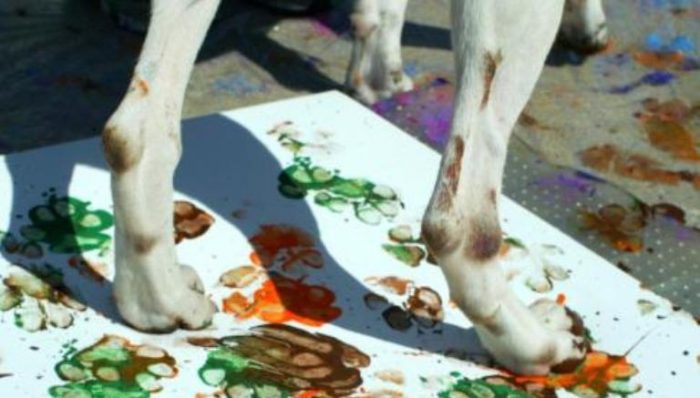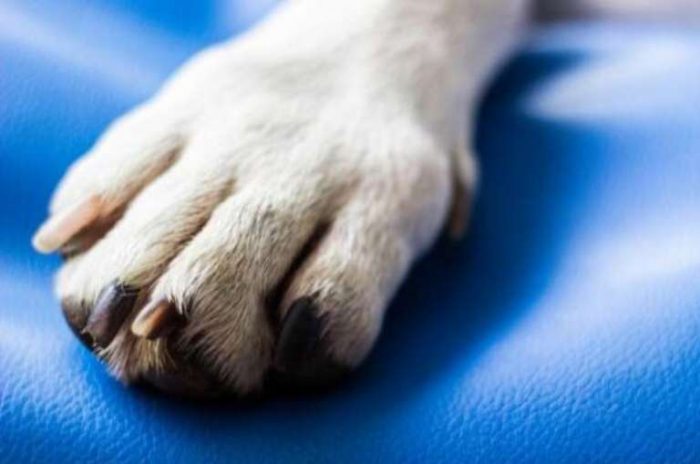Declawing a dog or other household pets has sparked several controversies over the years as experts consider the procedure barbaric, as well as useless. The surgical procedure used to declaw a pup is known as onychectomy and it entails much more than having a dog’s nails removed; the pup’s end joints on each toe will be equally cut off. This is comparable to having the end of your fingers chopped off to stop them from growing back.
Some specialists believe that cat parents will benefit from the process as it will keep them from damaging the furniture and attacking people. However, this surgery is not considered necessary for the canine population. Notwithstanding, declawing a dog has its pros and cons which you are about to find out.
Table of Contents
Reasons You Need To Declaw Your Dog
We cannot say that there are good reasons that may call for the process of declawing a dog as the procedure is not medically obligatory. In fact, declawing is regarded as completely unnecessary since the canine population is known to employ their claws in a lot of activities – from digging to scratching. The precise process of surgically declawing a dog is not known to most dog parents which leads many to think that pups can just have their nails easily eliminated.
With many canine breeds, though not all, declawing has become a common tradition, especially when owners have the dewclaws eliminated a couple of days after the puppies are born.
Among some breeds, declawing is for the purpose of improving presentation at the show ring in a bid to prevent any potential health issues. However, these problems don’t occur often enough that it makes nonsense of removing completely – healthy dewclaws to protect the puppy from something that may never happen.
Another reason vets recommend declawing a dog is for medical expediency, especially for those pups that have an infection in the nail beds. This may actually be the only time when it becomes a good option to declaw your canine companion. It is important for every pet parent to be on the lookout for signs indicating that their furry friends may have this sort of infection. When such is noticed, the pup should be taken to the vet for a check-up. Appropriate treatment for this kind of health issue may include declawing, but, it is left for the veterinarian to decide, depending on how severe the condition is, declawing a dog may not be the only option.
When you notice that your pooch is having difficulty with walking, refusing to walk, or is limping, then, you need to check all the paws for signs and symptoms of possible infection. This may be indicated by redness or swelling around the canine’s claw area.
What About The Dewclaws?
Dewclaws are what uninformed breeders call the canine’s “thumbs.” Depending on breed type, pups are known to have dewclaws on the inside of their fore-limb and, in cases that are rare, on the hind limbs too. Many breeders prefer to have them removed when puppies are newly born, as they consider the dewclaws to be responsible for a series of injuries. However, this is an old practice with little or no scientific backing.
Is It Necessary To Declaw A Dog, What Are Disadvantages?
From all indications, declawing is frowned upon by animal rights laws and is not supported by animal health practitioners. Thus, it must come with a whole lot of disadvantages since it is a process that is considered unnecessary.
In fact, declawing a dog is not even a necessity. While the felines and the canines have claws, both are built to work very differently with that part of their anatomy. The kitties are known to use their claws for a plethora of reasons ranging from climbing to self-defense, which may necessitate that pet owners declaw them. On the other hand, the canine population doesn’t rely on their claws for much. They may only utilize them in scratching their body, playing, and digging, and that’s pretty much where the use for those claws stops. Any injury inflicted with a dog’s paw is never intentional.
Besides, surgical procedures designed to declaw canines do not exist, but that is not all, removing the claws of a canine is physically impossible. The procedure for declawing is not designed to accommodate the physical attributes of a dog and would end up doing more harm than good, impeding a healthy pup’s natural ability to walk and run.
For canines that are not used as show dogs, their claws are best kept the way they are as there may be no need to declaw, just ensure that the nails are taken care of and clipped as the need arises.
By declawing a dog, you have only succeeded in putting the poor animal through excruciating pain that will need a lot of painkillers to control. According to submissions from studies, this procedure can result in health issues like spinal injuries, arthritis, and deformities. You may even have to start teaching the dog how to walk which is stressful. Say no to declawing canines as there seems to be no scientific reason supporting the act of declawing a dog.
Read Also: When Exactly Does The German Shepherd Dog Stop Growing?
Is Declawing A Dog Considered As Animal Cruelty?

Over the years, the subject of declawing pets, cats and dogs, has sparked a lot of controversies with one faction viewing it as animal cruelty while others hold different opinions. Many cat parents who decide to have their feline companions declawed do so because of the damage these furballs can unleash on household furniture and floor coverings. However, this is not considered a good enough reason to declaw them.
There are pet owners who are of the belief that declawing only entails the removal of a dog’s nails. However, the process is not as simple as that, it is a surgical process that is very painful and basically entails taking out each of the pet’s toes at the initial joint, which is essentially considered amputation. For this reason, the procedure is viewed as cruel and unethical; the only time that declawing a dog or any other pet can be considered is in situations where the animal stands to suffer without having the procedure carried out.
In an actual sense, canines don’t usually target household furniture with their claws. Unlike their feline counterparts that tend to scratch at any surface; pups merely employ their claws for performing menial jobs around the home. Knowing this, there should be no cogent reason for dog owners to opt for declawing.
Because of the inherent pain of the process, pet owners should never expose their animal companions to declawing simply for their (owner’s) own convenience – declawing can only be considered for medical reasons. Besides, there are a good number of countries that have tagged the procedure of declawing a dog as animal cruelty, though, it has continued in the US.
